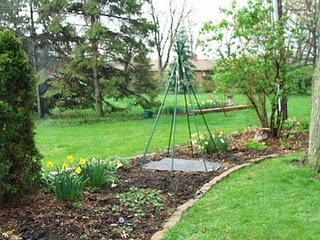It’s spring . . . time to plant your homeschool math lessons! And reap the harvest: an enthusiasm for and genuine love of the subject that extrapolates to a lifelong love of all learning. Perhaps one of the greatest shortcomings of today’s mainstream education model is its abstractness or isolation from life itself.
As John Dewey said, “There is no such thing as educational value in the abstract. The notion that some subjects and methods and that acquaintance with certain facts and truths possess educational value in and of themselves is the reason why traditional education reduced the material of education so largely to a diet of predigested materials.”
John Dewey believed that experience is the best teacher. He said, “Education is not a preparation for life; education is life itself.” And, “Give the pupils something to do, not something to learn, and the doing is of such a nature as to demand thinking; learning naturally results.” Homeschoolers have a head start on this sort of learning. Integrating life and school is much easier in the home than it is in the classroom setting.
Even the home setting however, does not always guarantee that math (more so than other subjects’) lessons will not fall into the trap of abstraction. It’s far too easy to reduce math to its dry and often boring bare bones. We all know how drills and memorization can sometimes set up fierce resistance in even the most otherwise cooperative child!
Gardening is a wonderful antidote to schoolroom math. Bring the calculations outdoors to the plants, soil, and harvest of the garden. Build enthusiasm before you start by offering choices in the planning stage. A “soup and salad” garden is a wonderful example of a plan that is fairly easy to design and implement. A possible centerpiece for this garden would be a “green bean teepee.”
Here is a wonderful multi-purpose structure: shelter, food, and healthy growing plants. Many math lessons can be extracted from your garden experience. Using graph papers to plot the layout and rows, possibly color-coded to identify plants, is a great way to start.
One of my best days as a Waldorf teacher was with my third grade class as they counted the worms in the worm culture bin after we had “fed” them with the compost from the whole school’s daily lunches. That was a sight! All those wriggling worms on huge sheets of paper, being counted by happy hands. And we were all amazed at the wonderful soil created from apple cores and bread crusts by our colony of hungry worms. Life lessons abound, along with math lessons . . .
Find lots of gardening help online or at the library, build your math lessons around the work in the garden, and you and year child(ren) will experience many kinds of growth. John Dewey, “Were all instructors to realize that the quality of mental process, not the production of correct answers, is the measure of educative growth something hardly less than a revolution in teaching would be worked.” Homeschooling families can form the vanguard of this revolution! Start with planning and constructing a bean teepee, and let your garden and your math lessons grow from there.


















